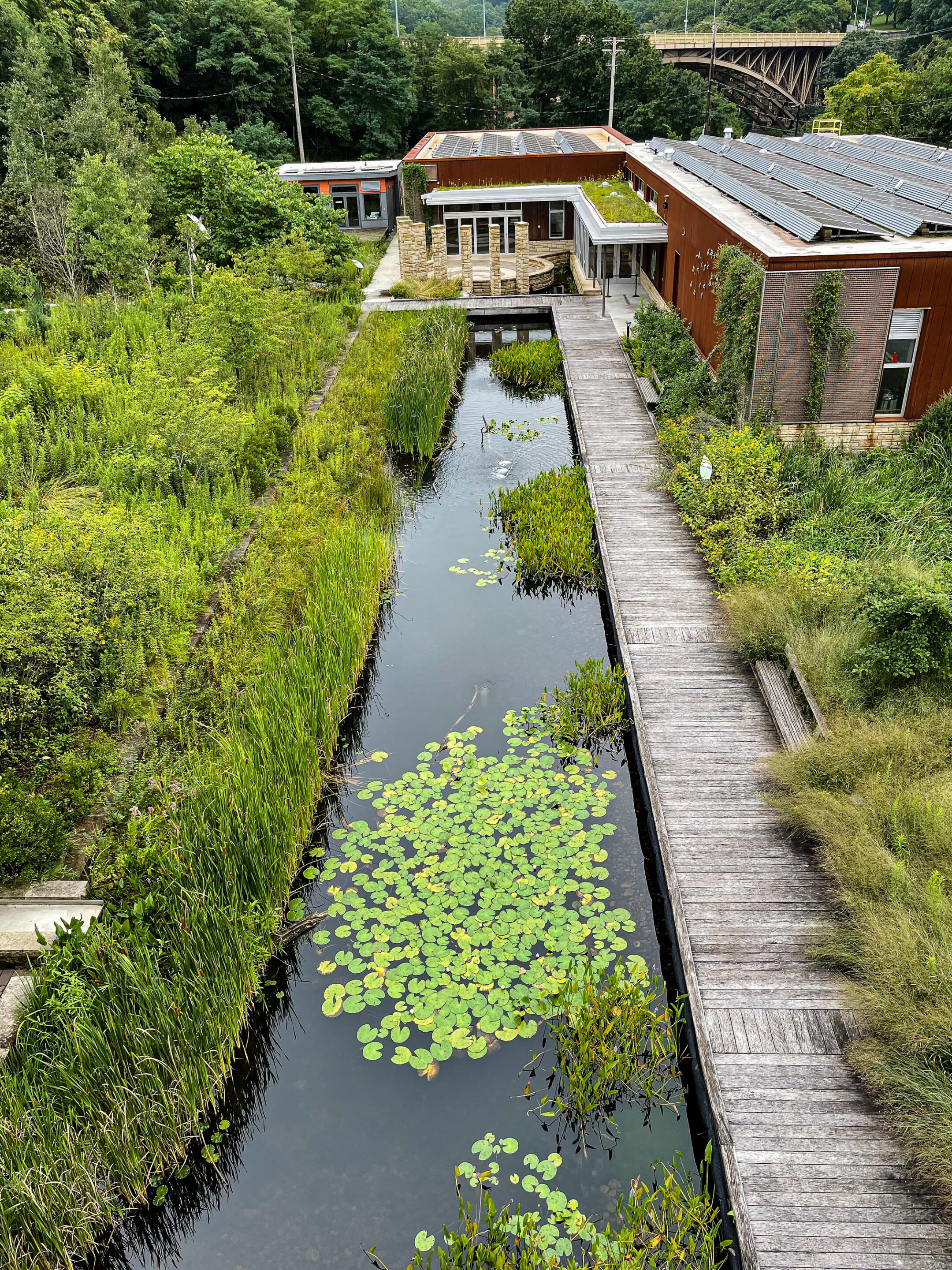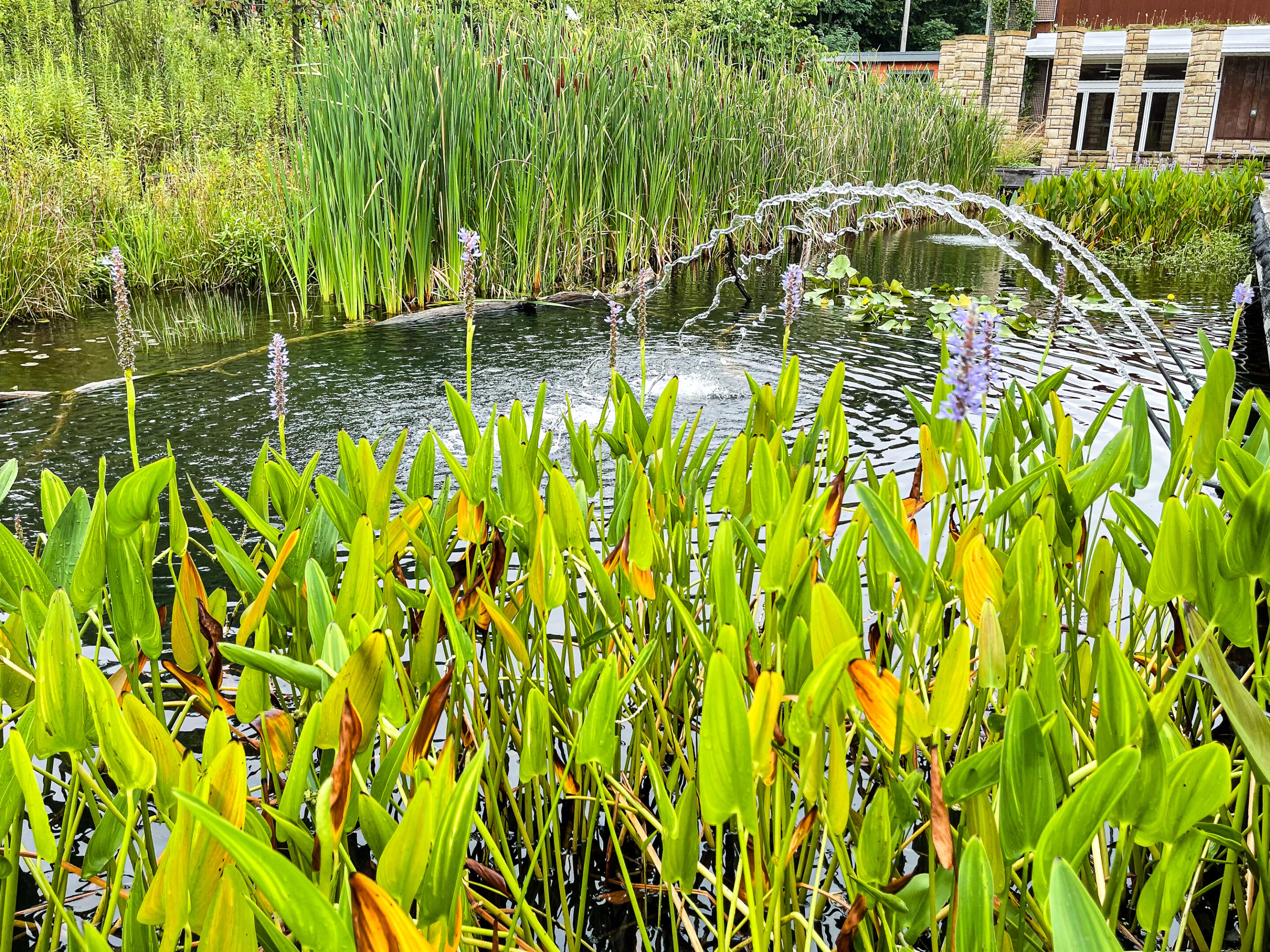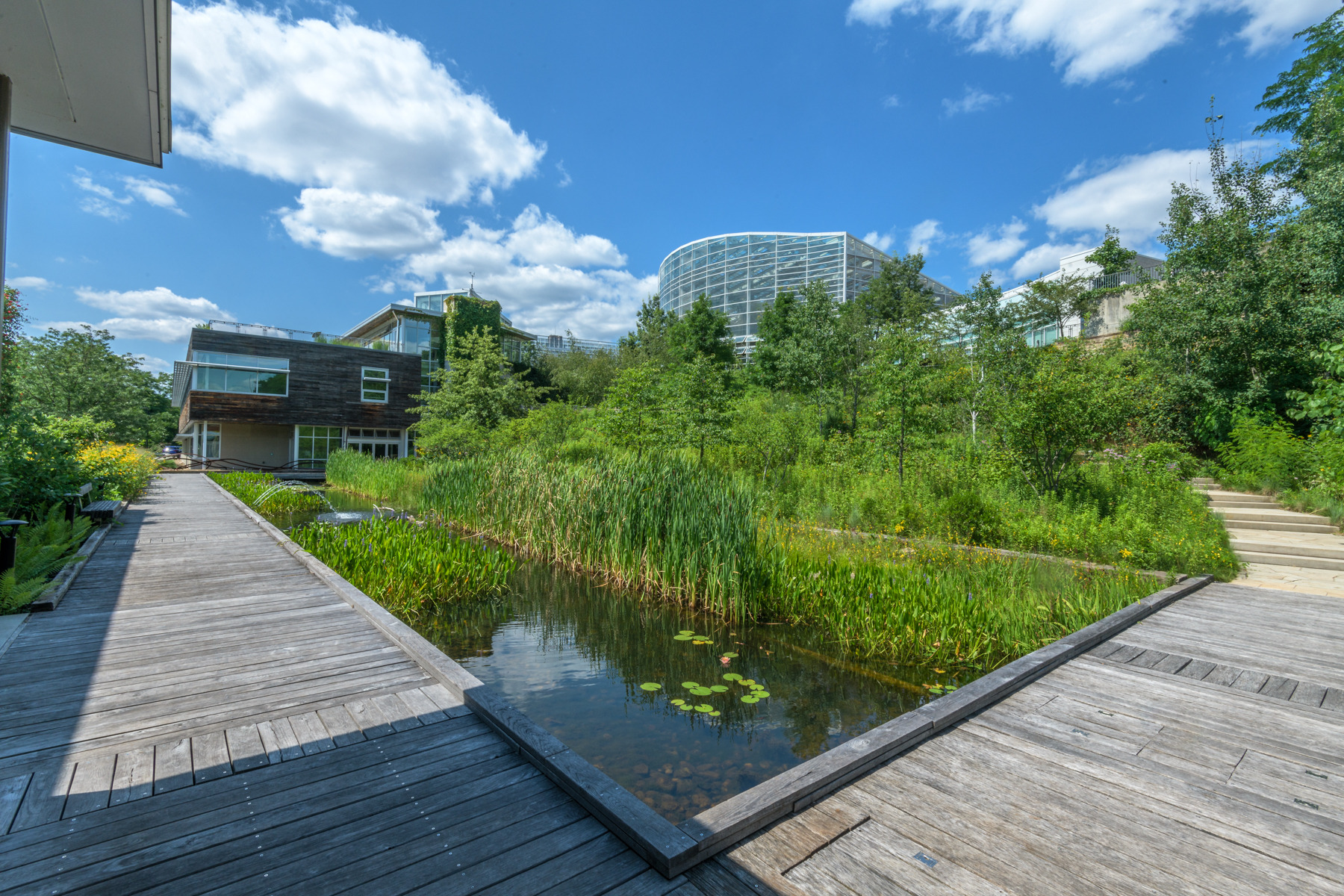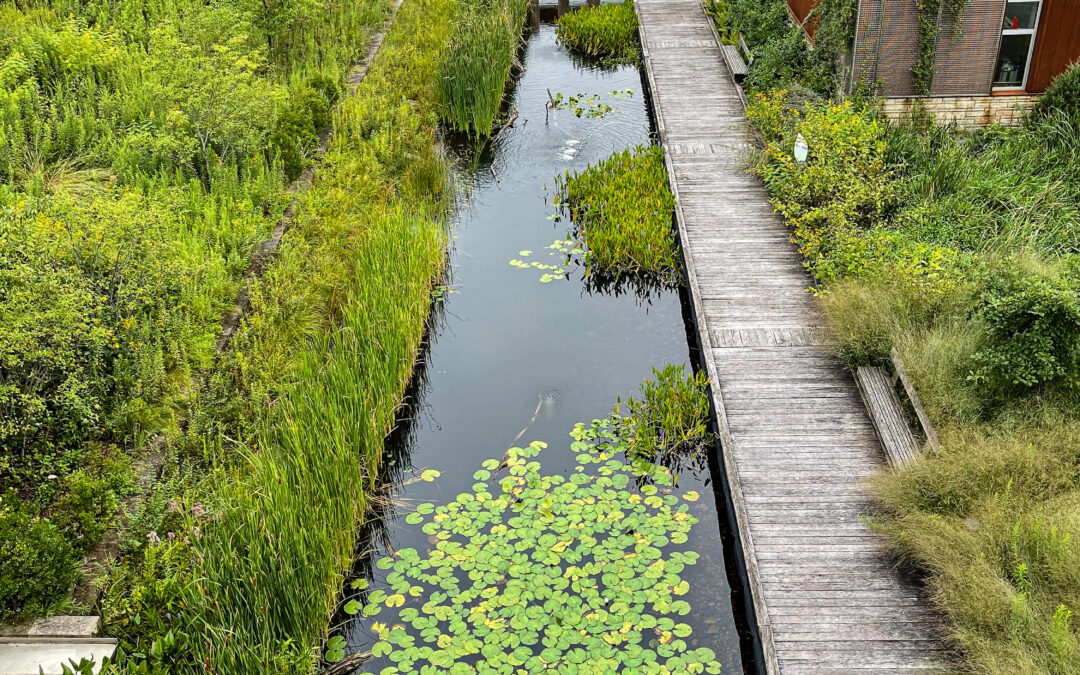Essence as Compass: Starting with the Climate Toolkit
by Sonja Bochart, IIDA, LEED AP, LEED AP BD&C, WELL AP, LFA, and Natalie Shutt-Banks, AIA, NOMA
In the face of a rapidly changing climate, our responses can easily become reactive—driven by urgency rather than clarity. That’s why we believe in starting from a different place: essence. Whether personal or organizational, essence is our north star, illuminating who we are at our core and guiding us toward who we are called to become. When climate action is led from essence, our strategies become more aligned, our actions more regenerative, and our impact more lasting.

Phipps Conservatory and Botanical Gardens Exhibit Staging Center, Pittsburgh, PA.
As a strategic partner to Phipps Conservatory and Botanical Garden, the founder of The Climate Toolkit, Lens has been honored to support a growing community of cultural and scientific institutions in aligning their climate action with deeper purpose. The Climate Toolkit is a collaborative platform for museums, gardens, zoos, science centers, nature centers, and field stations worldwide. Over 200 institutions across 25 countries, serving more than 100 million annual visitors, are utilizing the Toolkit’s multiple goals across nine focus areas—from energy and water to engagement and research. These goals align with the United Nations Sustainable Development Goals and Project Drawdown’s Table of Solutions.
From Checklist to Transformation
Organizations that connect with their essence move beyond a checklist mentality, embracing climate action as a living, evolving practice rooted in purpose and renewal. By guiding organizations and teams to reconnect with what makes them unique, we create space for coherent, transformative strategies rooted in unique identity and values. This approach is different from traditional mission, vision, and values work. It’s about uncovering what is essential, so organizations can make meaningful progress toward positive climate goals.
Earlier this year, in partnership with Phipps, we introduced essence-driven regenerative approaches to The Climate Toolkit members. In August, we led a three-part online series with leaders from five pioneering organizations: Anchorage Museum, University of Connecticut, The San Diego Natural History Museum, Franklin Park Conservatory and Botanical Gardens, and The Morton Arboretum. Each session invited participants to identify climate priorities aligned with both their essence and that of their communities, uncovering a nested system of meaning, where inner clarity drives outer action, and climate work becomes more authentic and aligned.

Phipps Conservatory and Botanical Gardens Exhibit Staging Center, Pittsburgh, PA.
It’s about uncovering what is essential, so organizations can make meaningful progress toward positive climate goals.

Phipps Conservatory and Botanical Gardens Exhibit Staging Center, Pittsburgh, PA.
Bringing Essence to the International Stage
In September, we brought this work to the international stage at the EuroGard Conference in Rome, leading a workshop that invites organizations across Europe to explore how working from essence can support climate action that is not just sustainable, but regenerative. This event brought together mission-driven organizations from over 15 countries, inviting them to step into a deeper way of working. Through regenerative frameworks and connecting to both their community and organizational essence, participants began unlocking transformative pathways for climate action.
This approach recognizes the interconnectedness of people, place, and purpose — inspiring organizations to lead with authenticity and resilience. The result: each organization developed the start of a grounded pathway for climate action — intentional, place-based steps that honor the complexity of their communities and the power of their purpose, empowering them to create resilient and regenerative futures.

Sonja Bochart, IIDA, LEED AP, LEED AP BD&C, WELL AP, LFA
Director
Sonja leads Lens using regenerative, living-systems strategies to advance well-being, place, and community, driving meaningful impact and transformative change for people, projects, and organizations.

Natalie Shutt-Banks, AIA NOMA
Architect, Associate
Natalie is an experienced architect who thrives when navigating between the vastness of all creative possibilities and the real-world constraints of any design problem.



